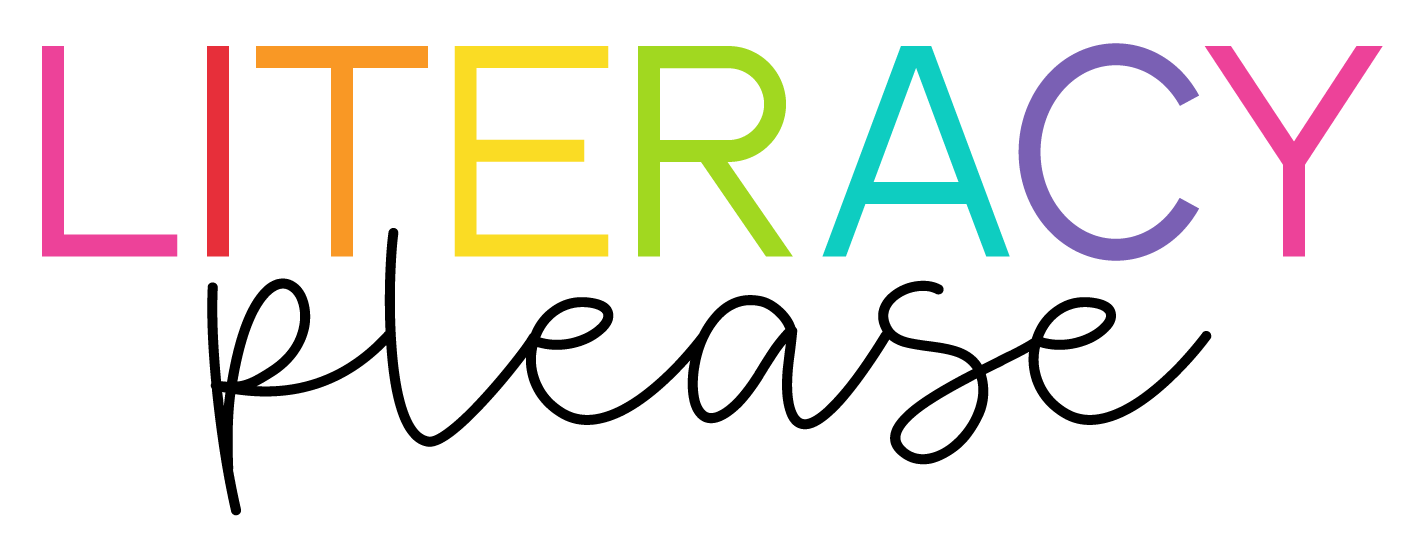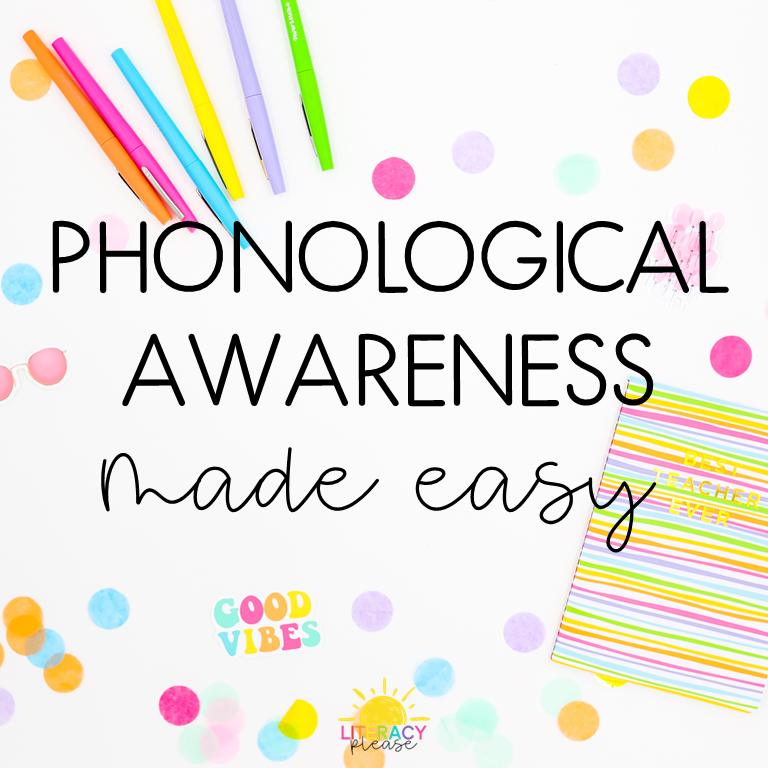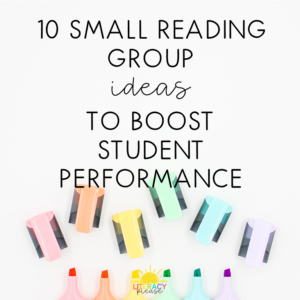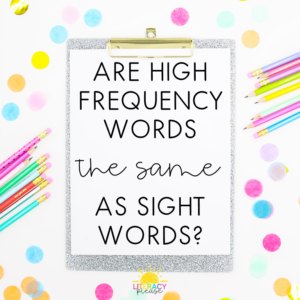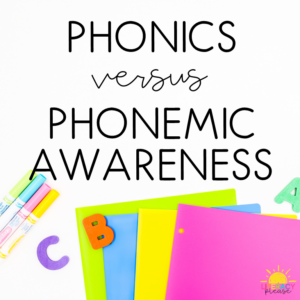You know that phonological awareness (P.A.) is an important part of literacy. You also know that without curriculum, it can be difficult to sneak it into our daily routine. Having a guide to quickly implement 3-5 minutes of P.A. into your morning message, right before phonics, or as a calming activity after recess activity could really make a difference with your young readers. If you’re still a little (or a lot) confused, keep reading to learn more with these phonological awareness examples.
What is Phonological Awareness?
You’ve probably heard the terms phonological awareness and phonemic awareness. And maybe you’ve wondered what’s the difference or are they the same thing?
As you can see in the graphic below, phonemic awareness falls under the umbrella of phonological awareness, which consists of four components–word awareness, syllable awareness, onset-rime awareness, and phoneme awareness.
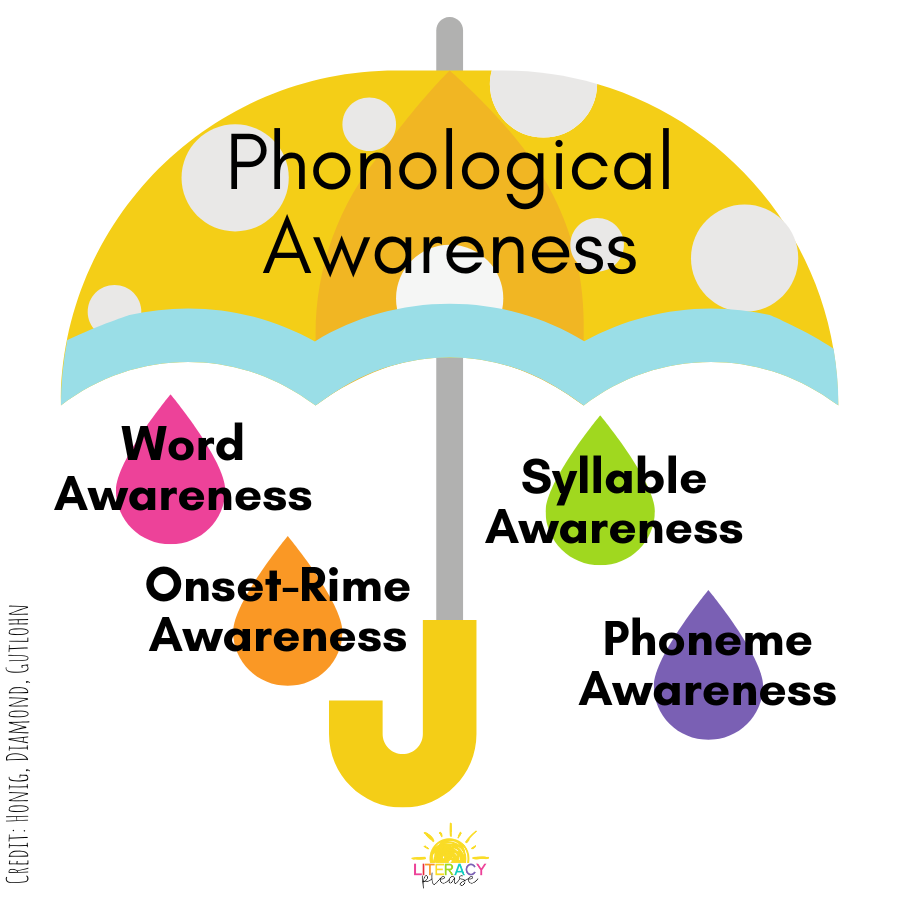
For more information about each, keep reading.
Word Level
The girl can ride her bike has six words. A child’s ability to break a sentence into word parts is word awareness. It can also be the awareness of the two words that make up a compound word. For example, if you give a student two words and ask them to put the words together, or blend, that is another example of word awareness.
Below is an example of blending, segmenting, and deletion using the word sunflower.
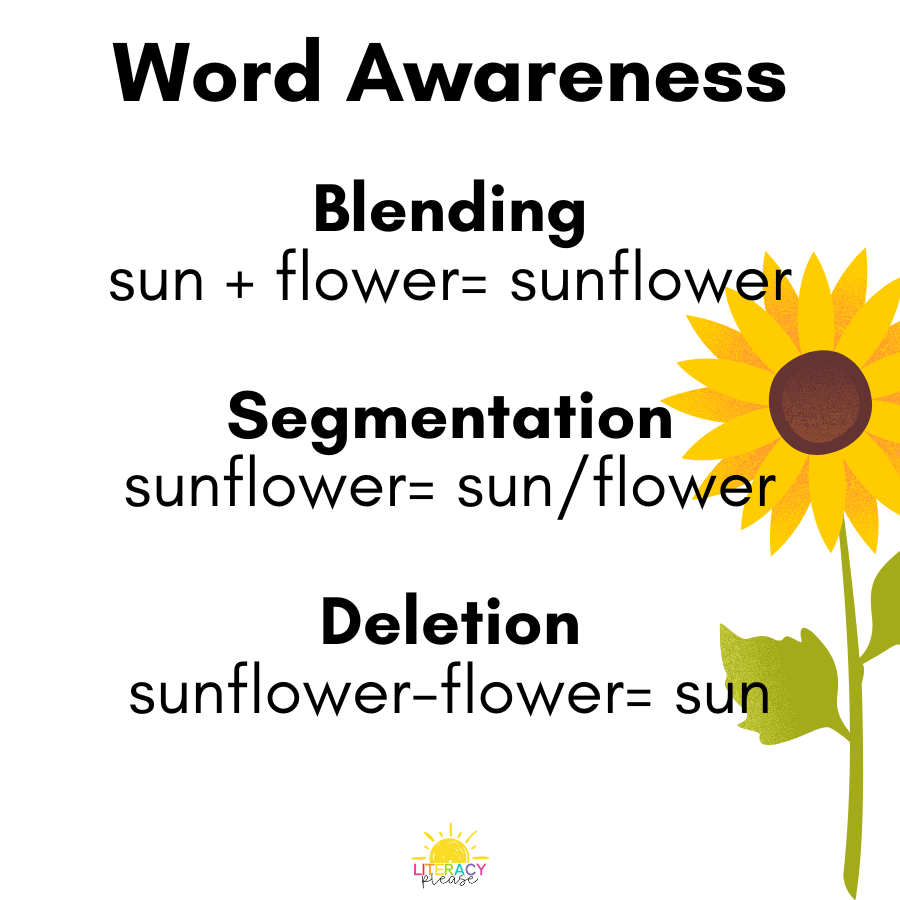
Syllable Level
A step above word awareness is syllable awareness. This skill is important as it will eventually lend itself to decoding and spelling multisyllabic words. Understanding how to identify syllables will help students break apart words while reading and writing longer words. But first, students will need to practice orally.
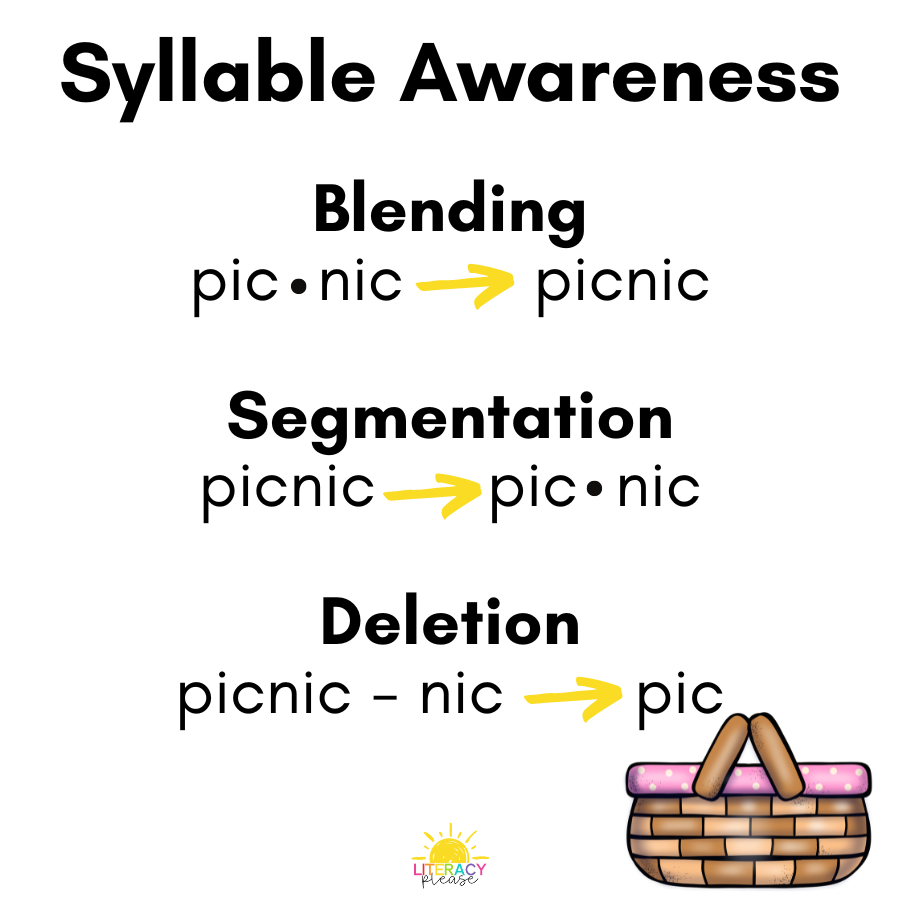
Onset-Rime Level
Onset and Rime Level consists of five components–recognizing rhymes, generating rhymes, categorizing, blending onset and rime, and segmenting onset and rime.
Recognizing Rhymes: given two words, students must decide if the words rhyme. For example, kit, bit or ten, top.
Generating Rhymes: given one word, students must think of a word that rhymes. For example, ask a child to tell you a word that rhymes with dog.
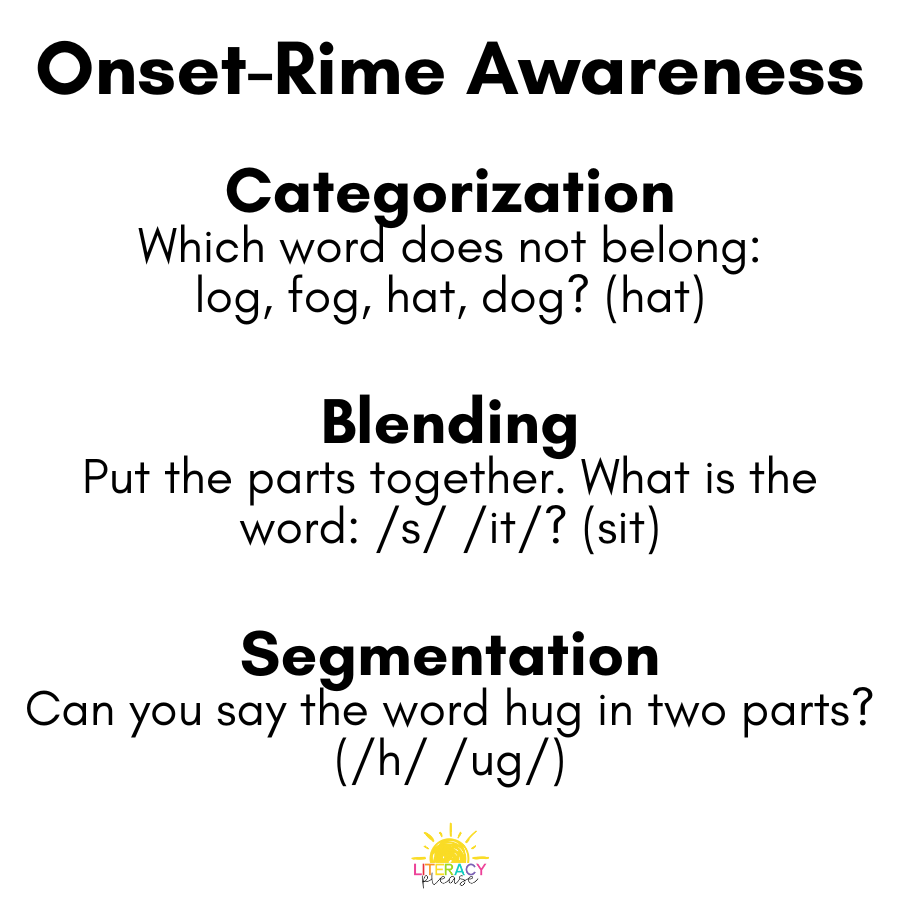
Phoneme Level
The phoneme level is pretty hefty, yet imperative. This level is said to be a predictor of students’ reading success. There are eight components to the phoneme level–isolation, identity, categorization, blending, segmenting, deletion, addition, and substitution.
Below you will find a graphic with examples of each component. Click to download.
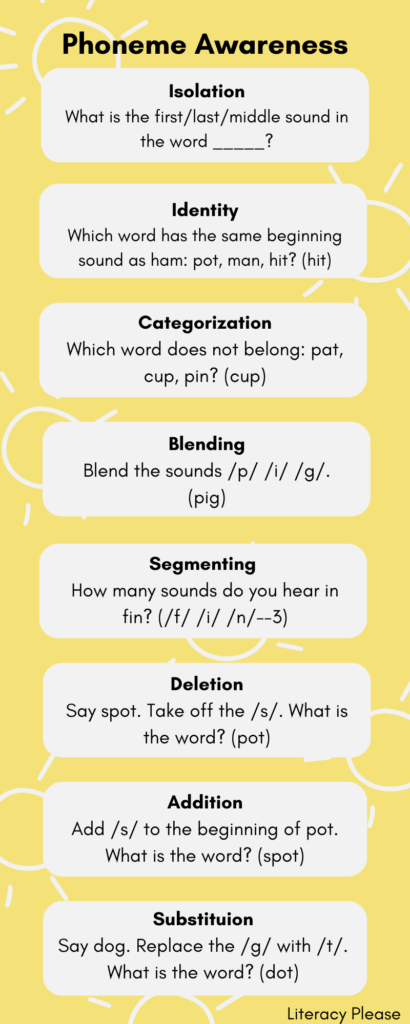
If you’re looking for more phonological awareness examples, lessons, and information check out The Six Shifts, which has some great free downloads.
